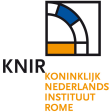Summary
- This field survey in and around the fortified pre-Roman (Messapian) town of Valesio is part of the umbrella Brindisino project (Yntema 1993, 8) and the Salento Isthmus project (Attema et al. 2010, 67-68) conducted by the AIVU in the Brindisino plain land system. This survey aimed to study the integration of the pre-Roman population of the Brindisi area into the Roman world (Romanisation debate). Excavation and survey within the fortified centre aimed to analyse the evolution of the main settlement, whereas the survey in the territory around such a centre allowed pointing out changes in regional settlement patterns. Since the Oria field survey (http://www.fastionline.org/survey/site/AIAC_470) and the Valesio field survey share the same method, comparative analysis of local changes in settlement patterns can be made and large-scale trends on a regional level can be detected.
Project Dates
- 1984 - 1990
Periods
- No period data has been added yet
- 1800 BC
- 1000 BC
- 600 AD
- Four intensive and systematic field-by-field survey campaigns were held in Valesio covering a total area of 18 sq km between the town of Valesio and the Adriatic Sea. The potential influence of different field conditions on the identification of sites was tested by surveying the fields in different seasons (sites were revisited at least once). The team was composed by six persons, the survey area was divided into random sectors and IGM maps 1 : 25 k enlarged to 1 : 10 k were used to register sites and finds. Within these sectors the agricultural plots were chosen as the basic research units. Standardized forms were used to document survey conditions and environmental aspects in the research units. Field walkers were spaced 6 to 8 meters apart and collected all the surface material or, if too heavy, documented and left it in the field. A material scatter (with definable limits and more than one human occurrence) was given the site status if the maximum artefact density (the highest artefact density within one sq. meter) within the scatter was remarkably higher than the overall artefact density of contemporary artefacts within the survey area. For multi-period sites the distribution and density of all artefact types as well as the exact position of diagnostic sherds were mapped in the field in an attempt to discern different chronological activity-foci. Walking distance within sites was reduced to 3-5 meters and carried out in squares of 25 x 25 m. A total of 79 sites were recorded as well as the continuous spread of off-site material in the territory under investigation.
Other Comments
- Directors: J. Boersma, G.J. Burgers, D. Yntema (Vrije Universiteit Amstedam) ............................................................................................................................. This record has been produced by the Fasti Online Survey team within the framework of the KNIR student internship 2020 'Digital Field Survey Archaeology'.
- What was the process of urbanisation in the pre-Roman Messapian society? What were the effects of Romanisation on the settlement patterns and town-countryside relations? This survey aims to shed light on the emergence of the urbanism in the pre-Roman, Messapian society.
Director
-
Director
- Douwe Yntema
- Gert-Jan Burgers- Vrije Universiteit Amsterdam (VUA)
- J. Boersma




![Edit [ed]](/survey/skins/fastisur/images/plusminus/edit.png)
![View [view]](/survey/skins/fastisur/images/plusminus/view.png)